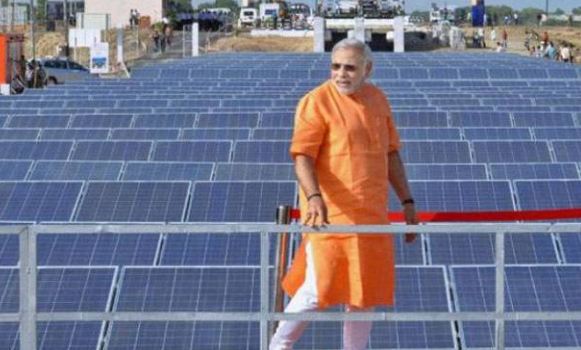One of the sectors growing exponentially since Modi government came to power is renewable energy. Globally, India stands 4th in wind power, 5th in renewable power and 6th in solar power installed capacity. Solar energy capacity has increased by 8 times from 2.63 GW in 2014 to 22 GW. Wind energy capacity increased by 1.6 times from 21 GW in 2014 to 34 GW. RK Singh led Ministry of Renewable Energy (MRE) has revised the target of 175 GW renewable energy generation by 2022 to 227 GW. An analysis by International Renewable Energy Agency (IRENA) says that the renewable energy sector created 47,000 new jobs in the country in 2017, accounting for over 20 percent of 5 lakh new green jobs created globally.
But the problem is that most of the solar cells are being imported from China, Malaysia, and Taiwan. India is the largest importer of photovoltaic cells from China, accounting for more than 30 percent of its exports. The domestic manufacturers are losing out to foreign exports due to the cheap prices at which countries like China are ready to sell solar cells. In the latest development of the safeguards case, the directorate general of trade restrictions last week recommended up to 25% safeguard duty on imports from China and Malaysia for a period of two years. “Even if the safeguard duty is imposed, increased costs can be easily absorbed by developers as prices of Chinese solar cells are going to crash,” said the official. The reason behind the Chinese price crash of Chinese solar cells is that the country announced last month that they would cut the subsidies to developers and halt the approvals of new solar projects to ease its pace of expansion. This will result in lower demand in China which is the biggest market, and therefore, producers in the country will be forced to look for alternate foreign markets. This will bring the prices of photovoltaic cells to a significantly lower level. Another problem with the increasing tariffs directly is that it will violate the World Trade Organization (WTO) rules which acting on the US complaint against India. A dispute settlement panel panel issued a comprehensive ruling in favour of US’ claimed that India had violated trade rules by mandating the use of locally made cells and modules in its national solar mission.

So to give a boost to manufacturers the ministry has deftly crafted a new 12 gigawatts solar energy scheme which will help local industry withstand the onslaught of cheap imports. The Rs 8,000-crore scheme will help the Indian manufacturers, who are waiting for the imposition of a tariff on foreign imports to save their business. “The scheme is in final stages of consultation with various government departments and ministries, including finance, commerce, and the Prime Minister’s Office”, a government official told ET.
As part of the scheme, Central government’s Public Sector Undertakings (PSUs) will call for tenders for setting up power projects, and the electricity generated through these will be used for their own consumption. “The scheme has been carefully designed to be compliant with the WTO rules. The government can mandate the use of locally manufactured components as part of the scheme since the power is for the government’s own consumption. It will help bridge the difference between domestic manufacturing capacity in India and our imports”, a government official said. The scheme will have an implementation period of four years, and by 2022, it will ensure a minimum manufacturing capacity of 3 GW of solar cells per year, which is the current size of the domestic solar cell market in India.
